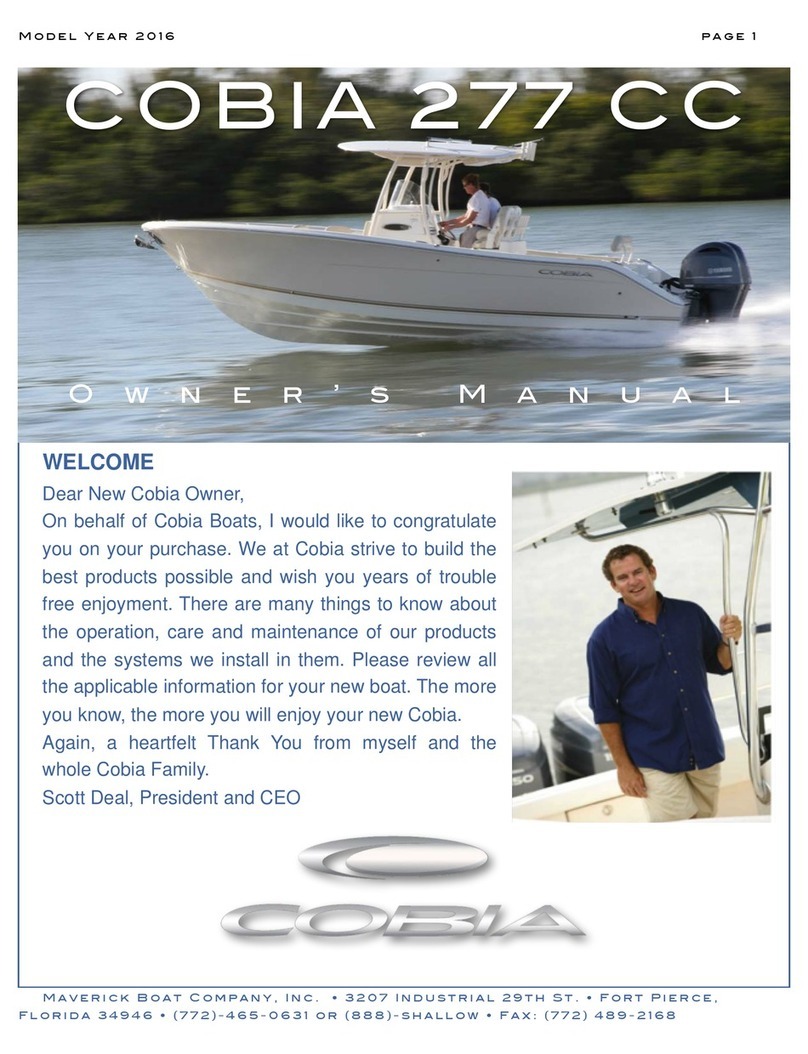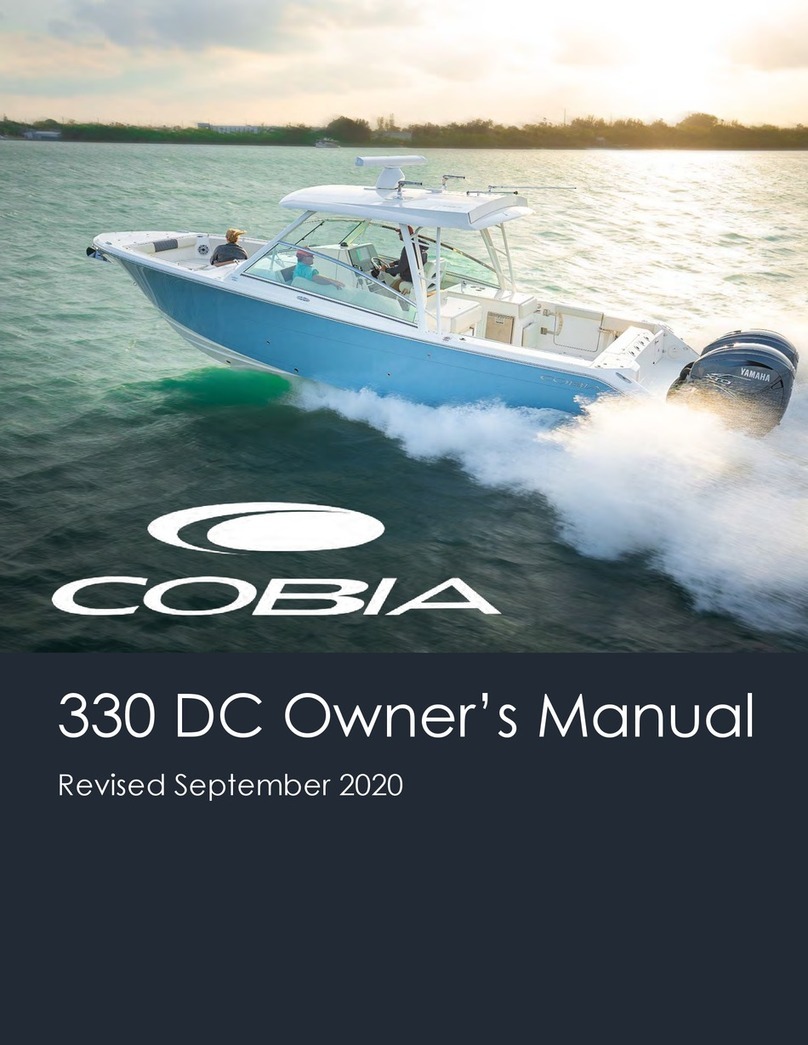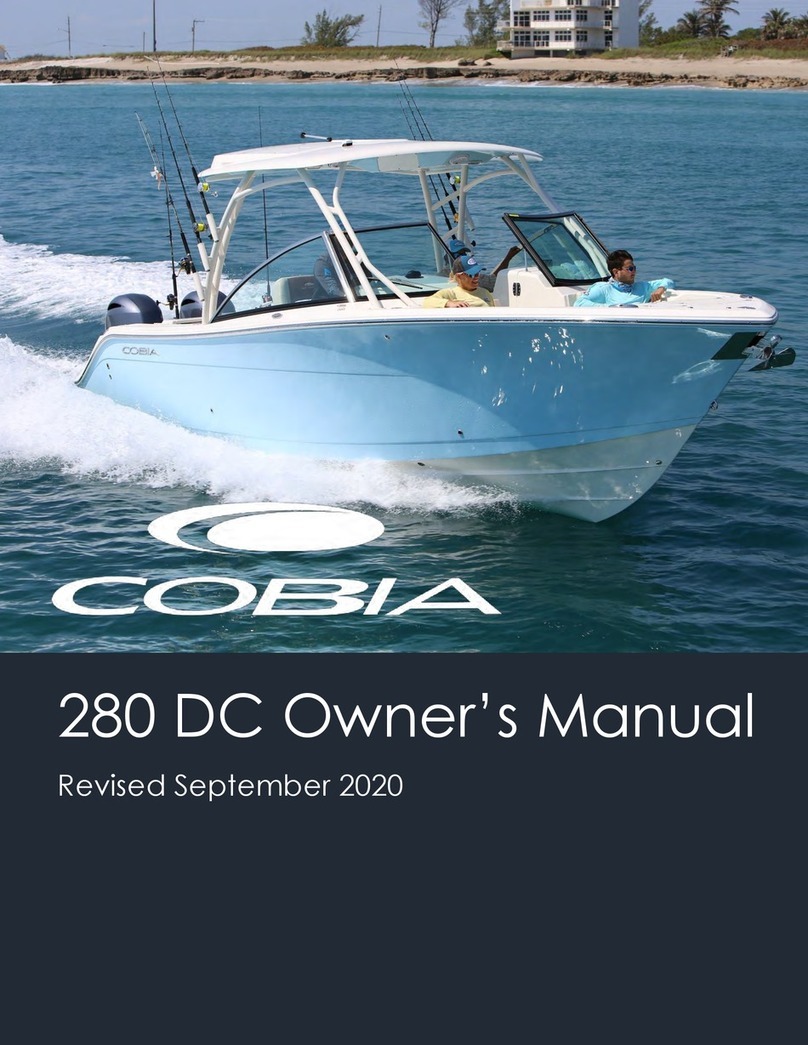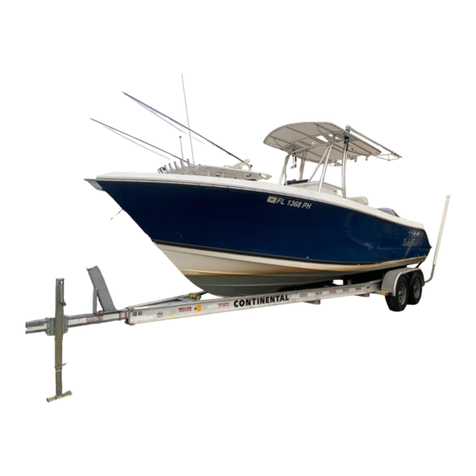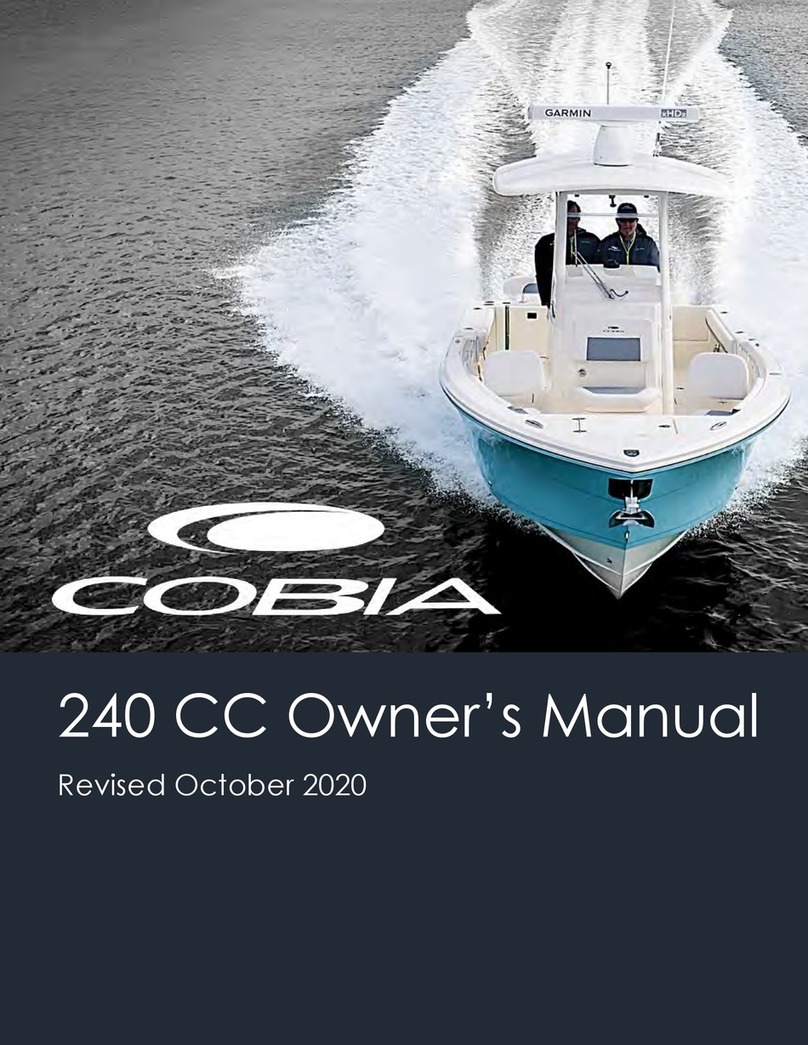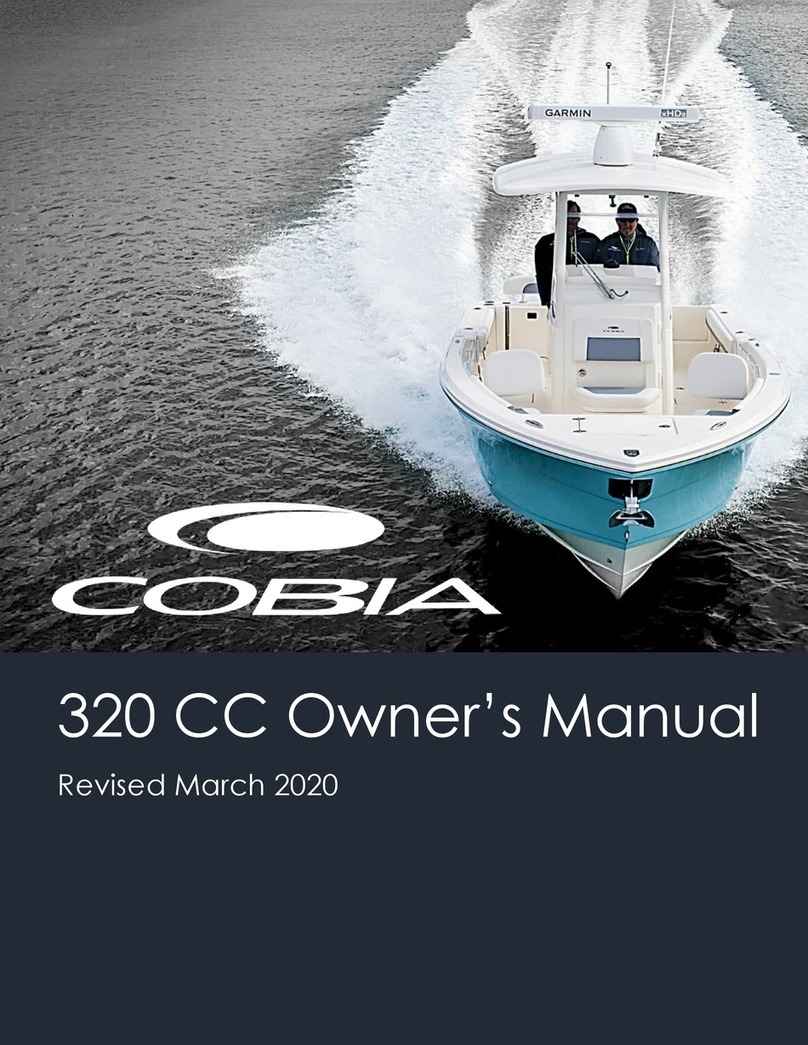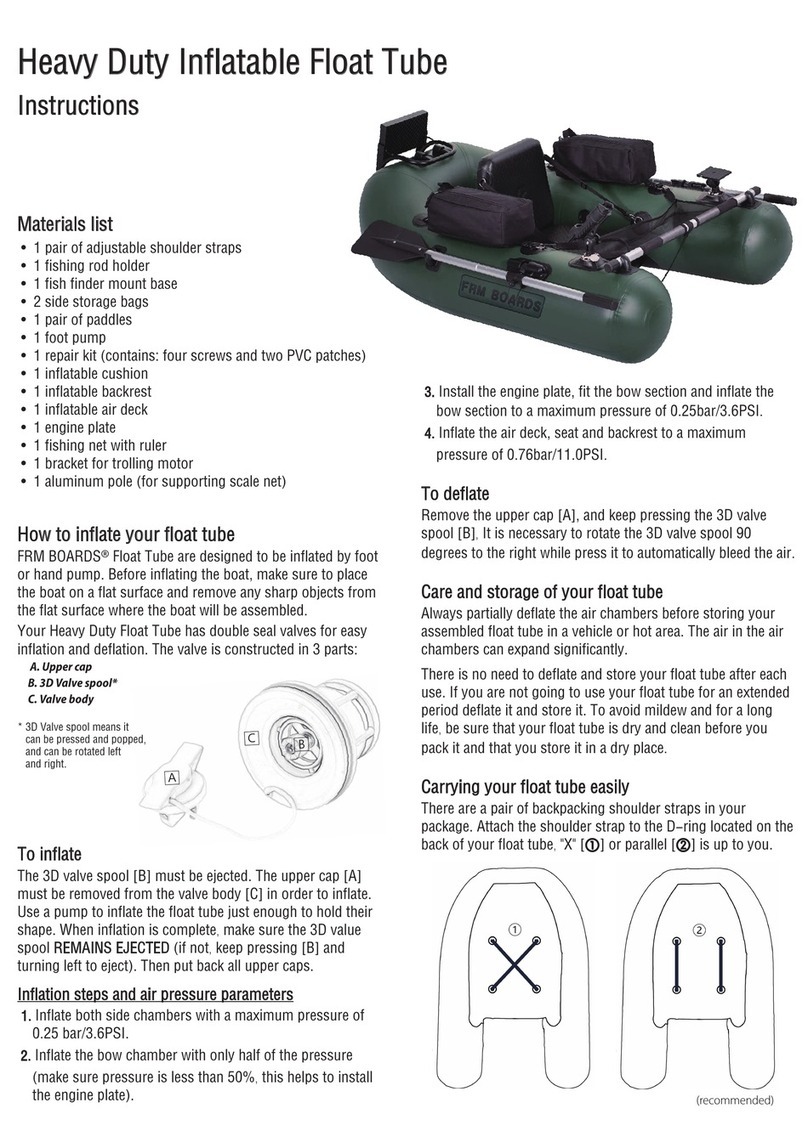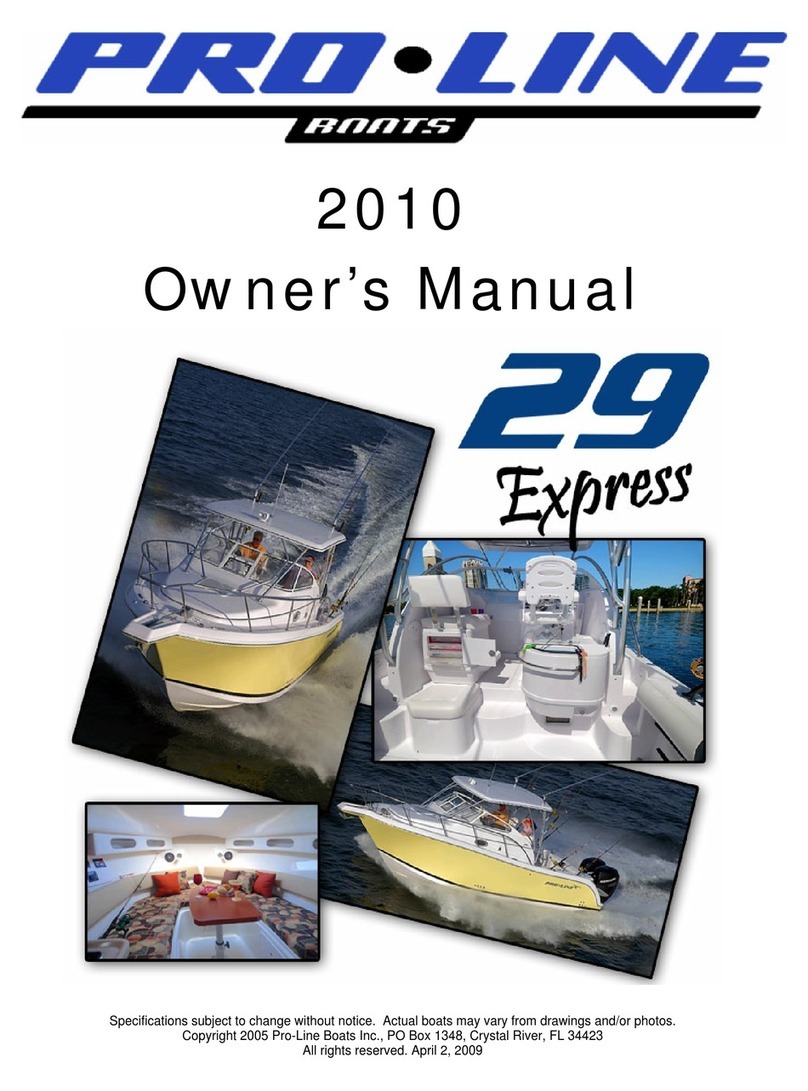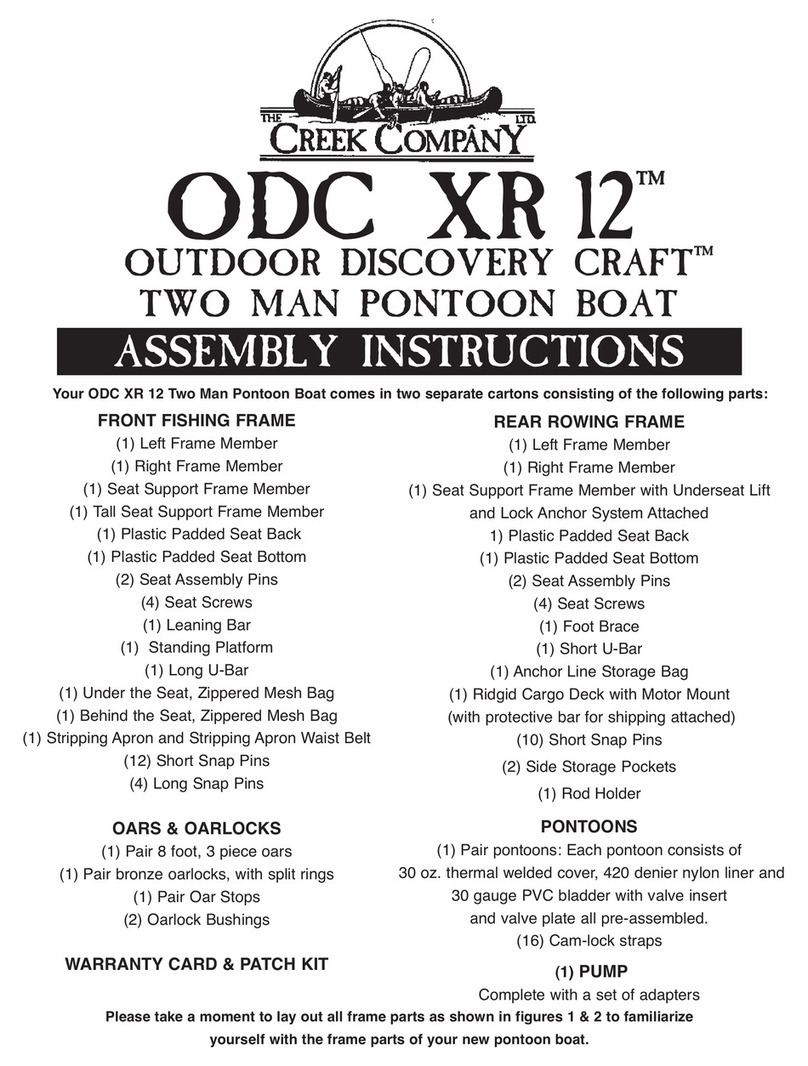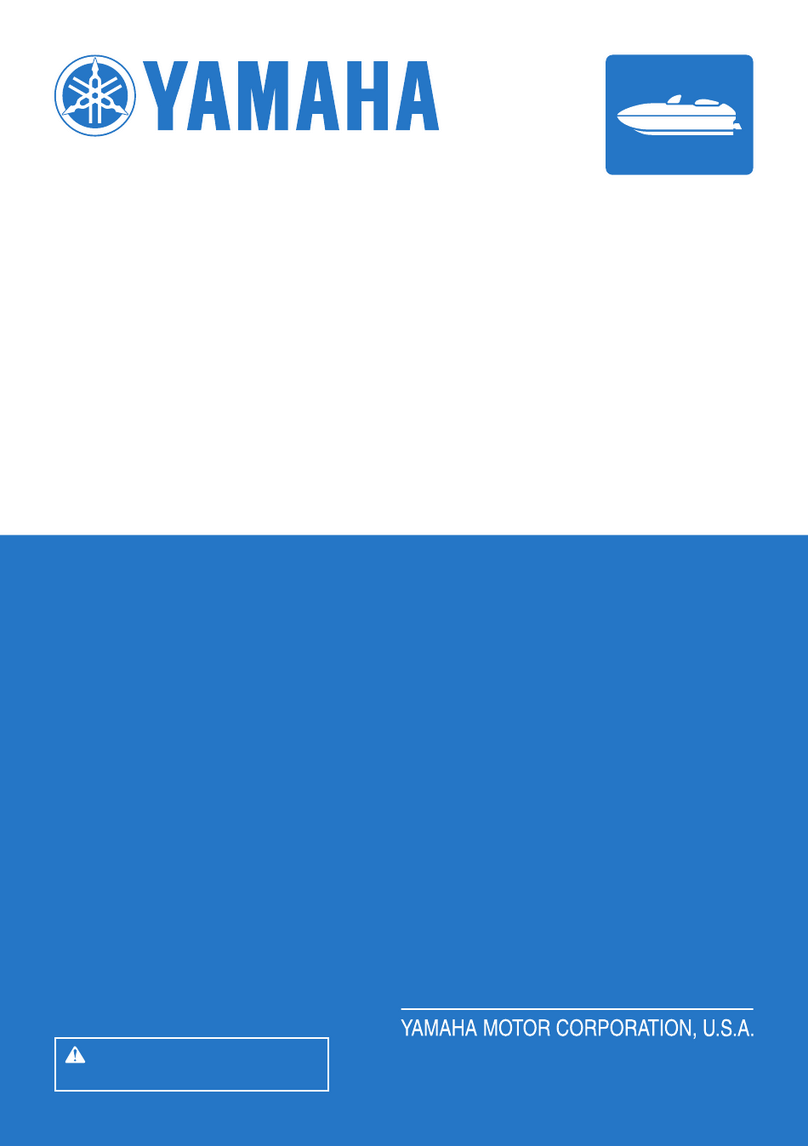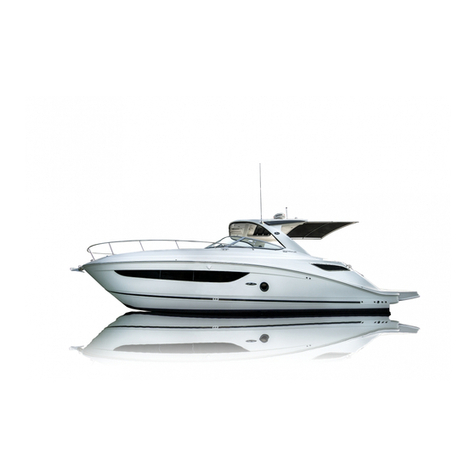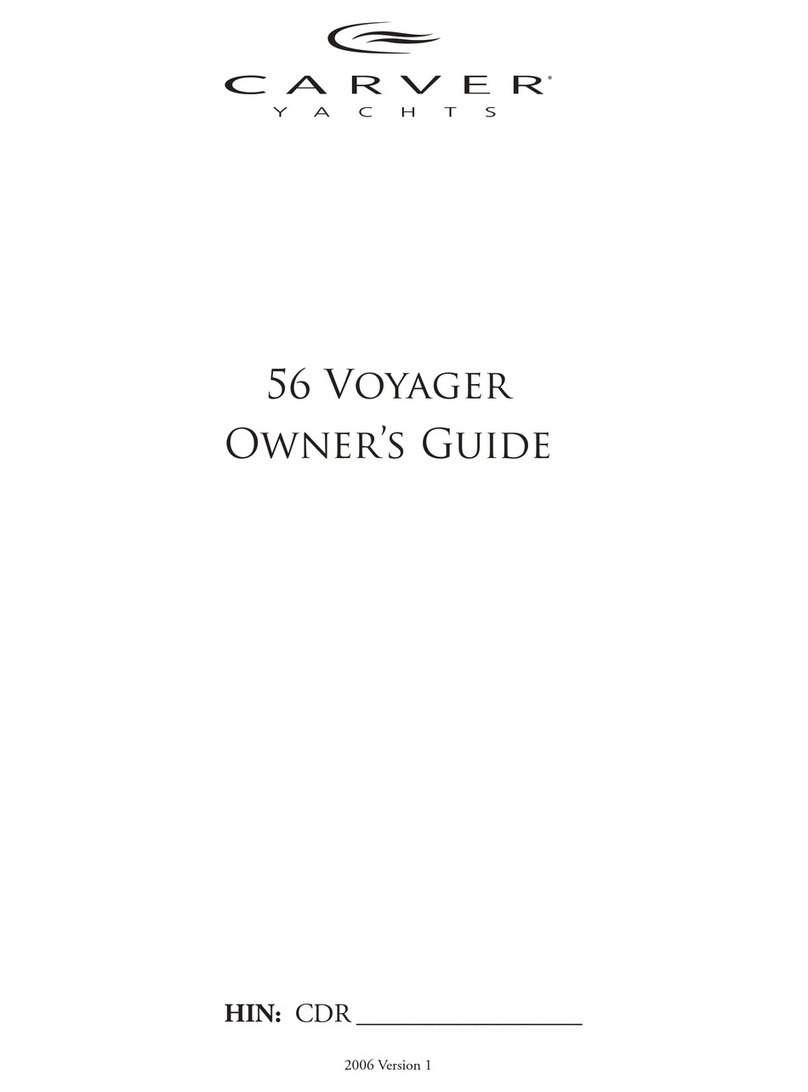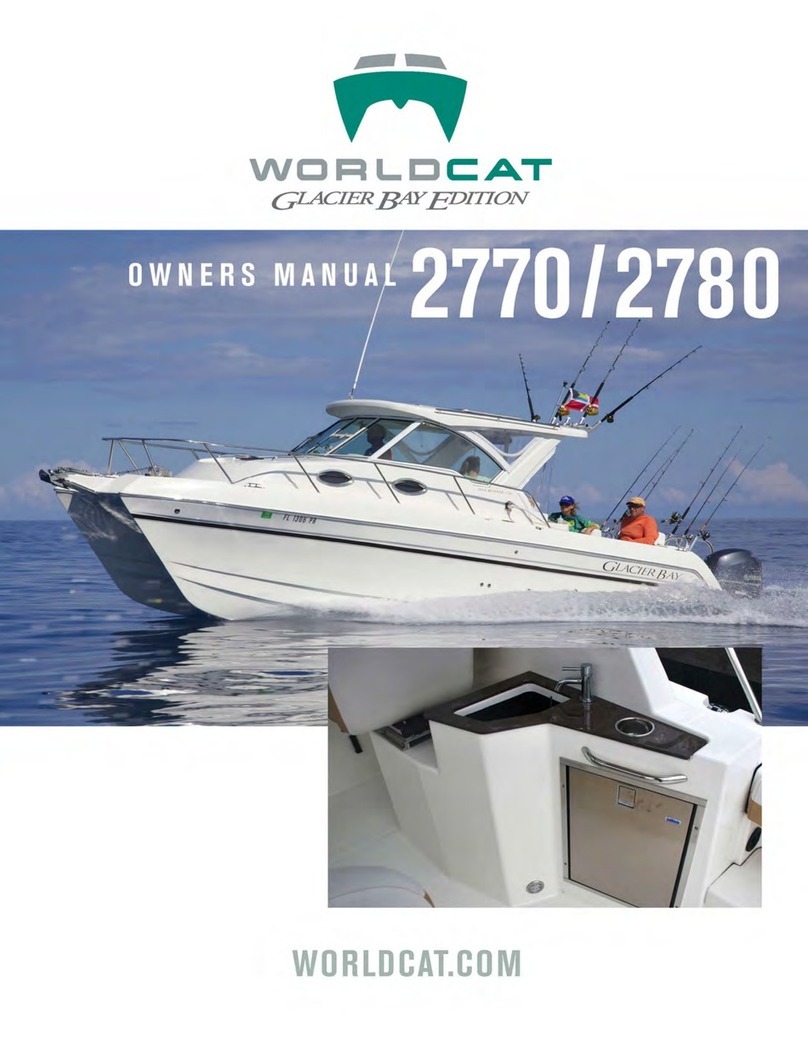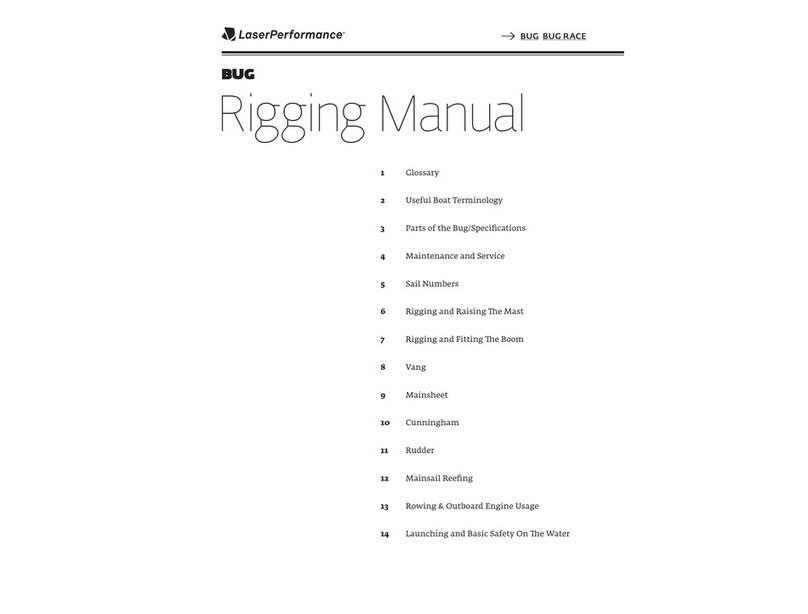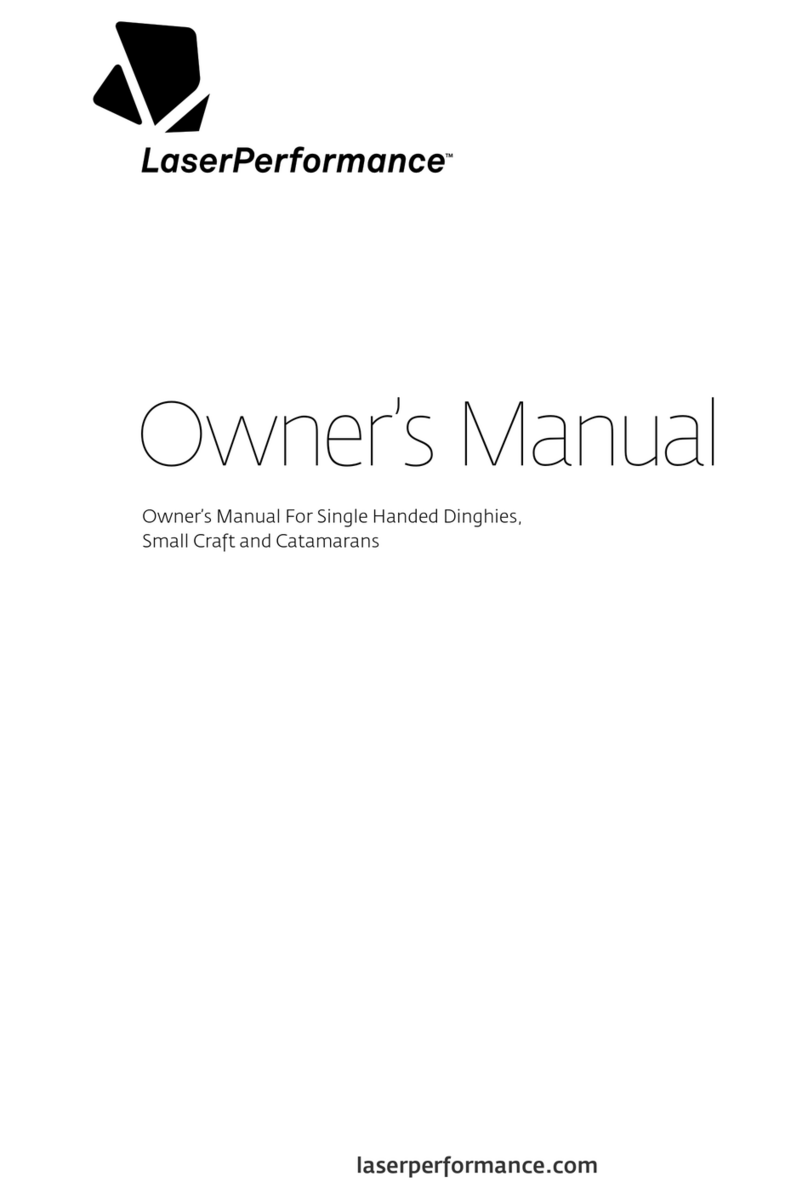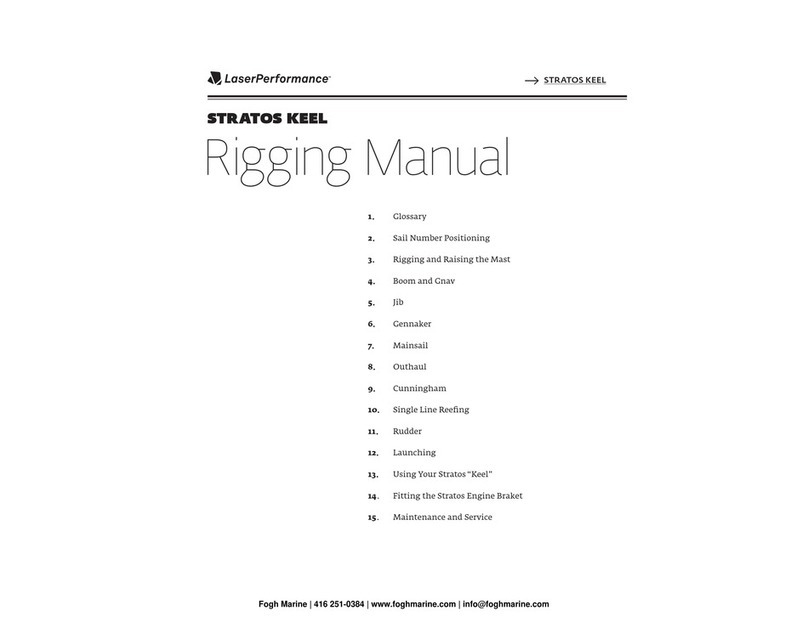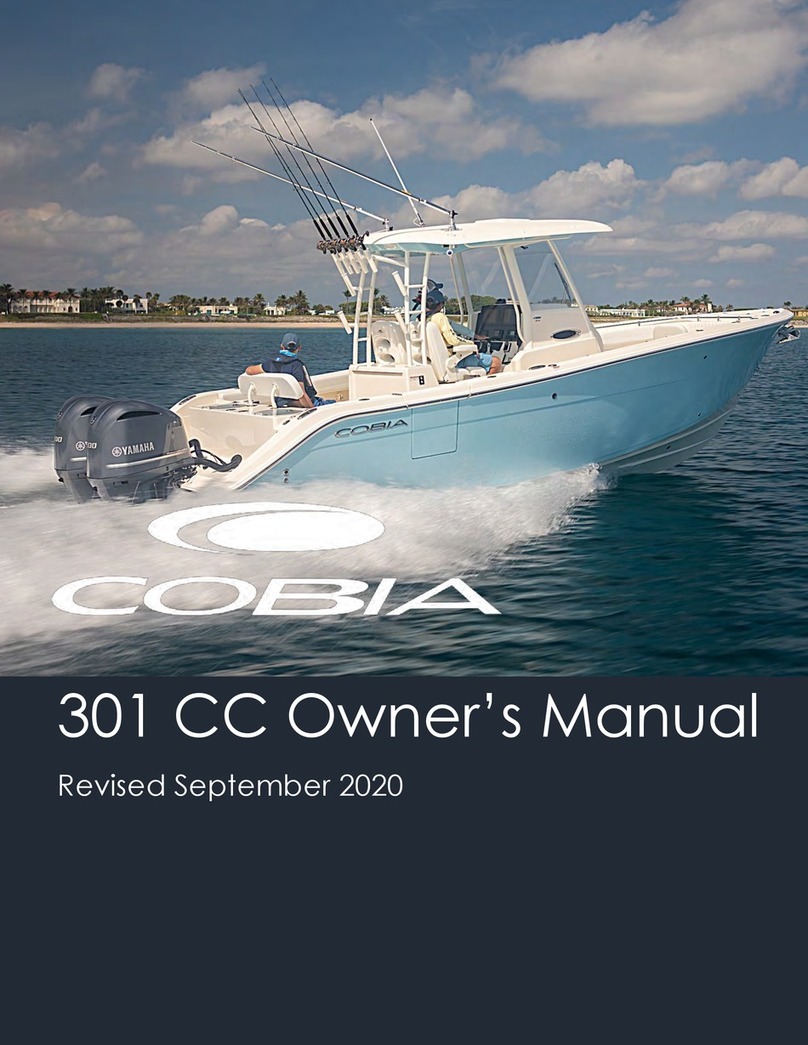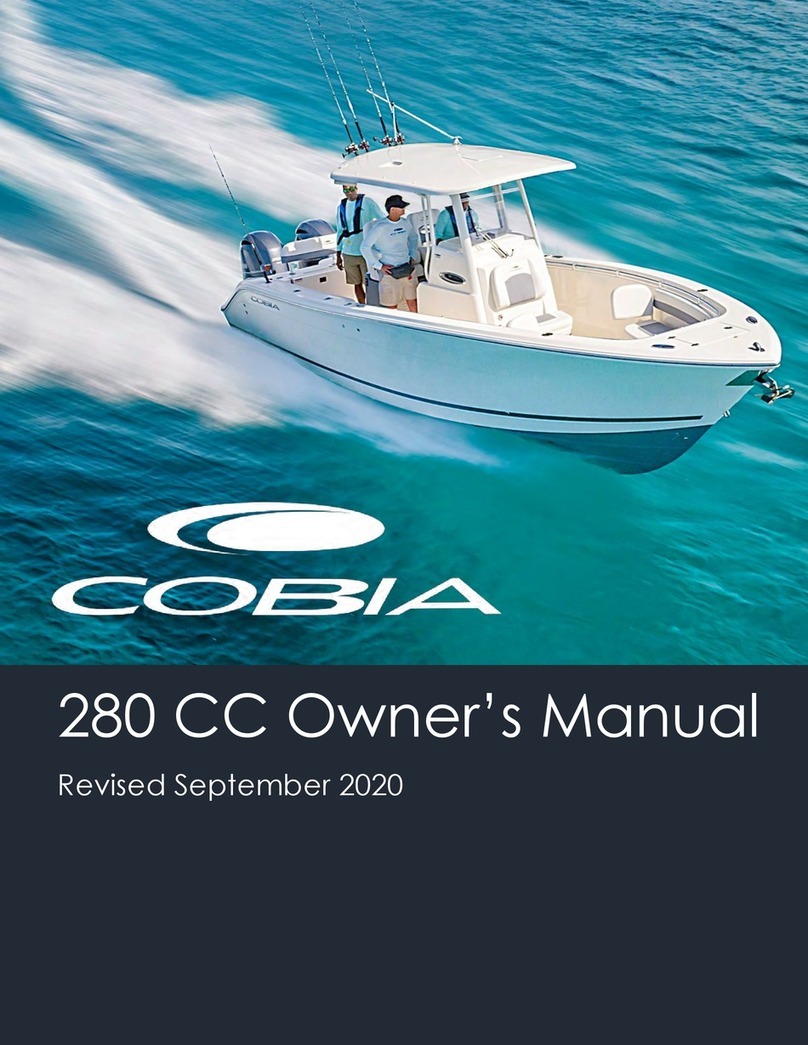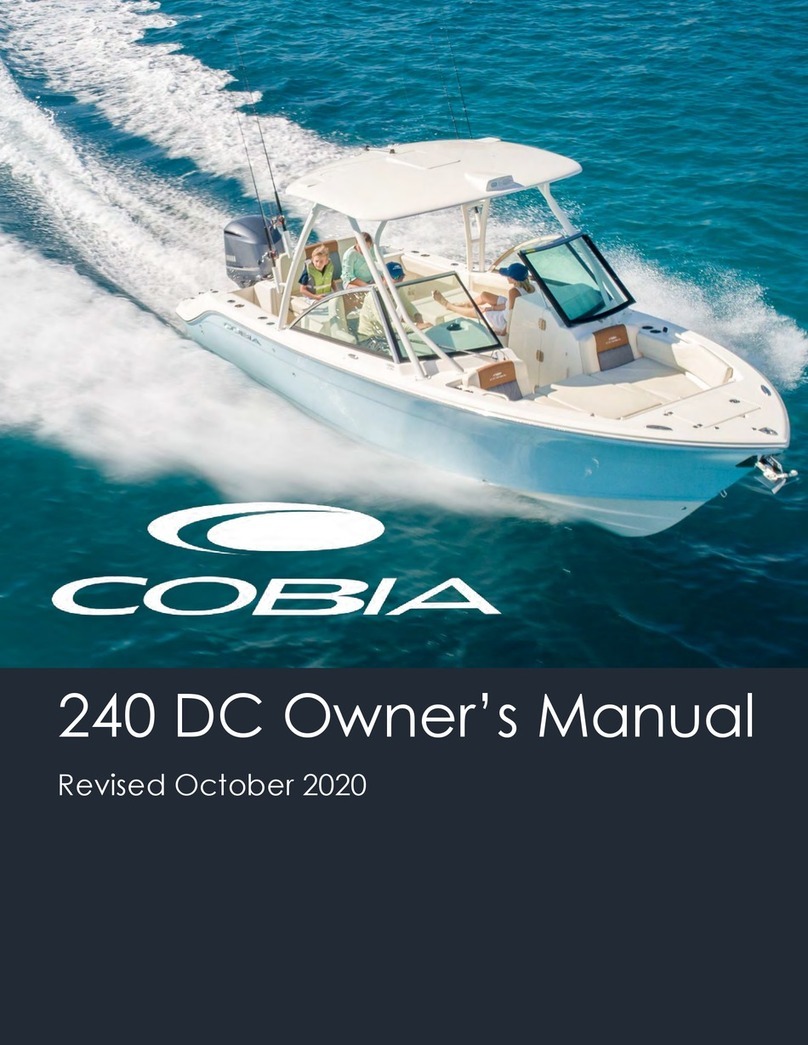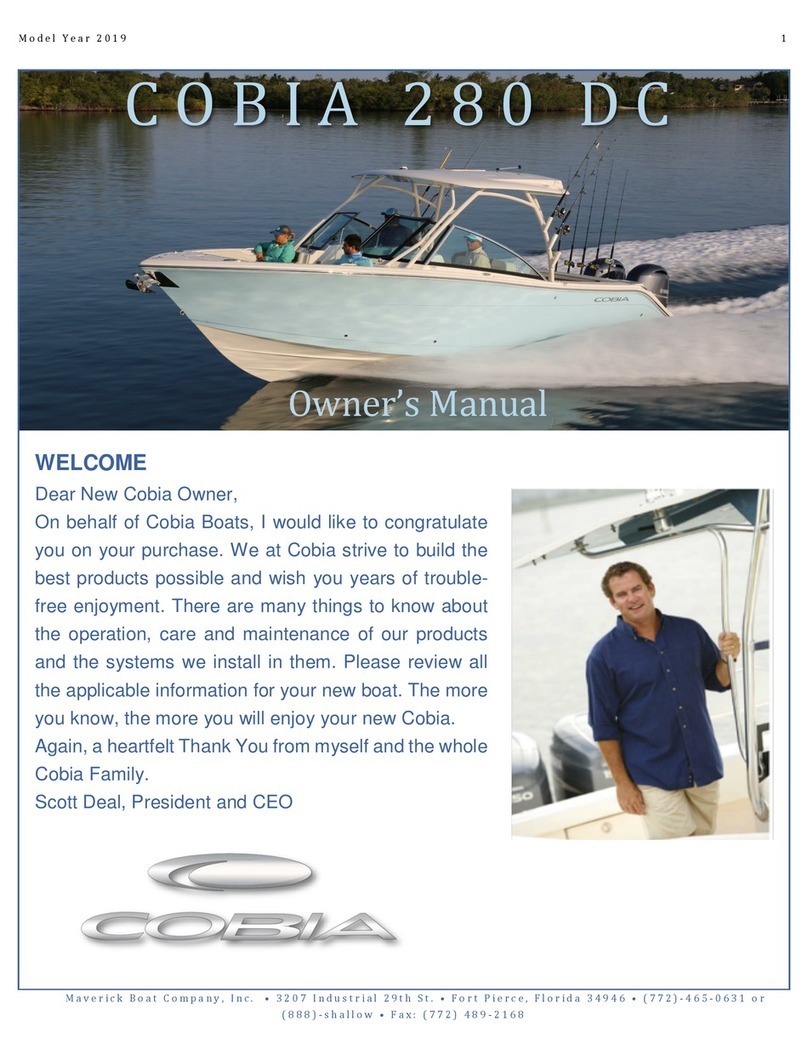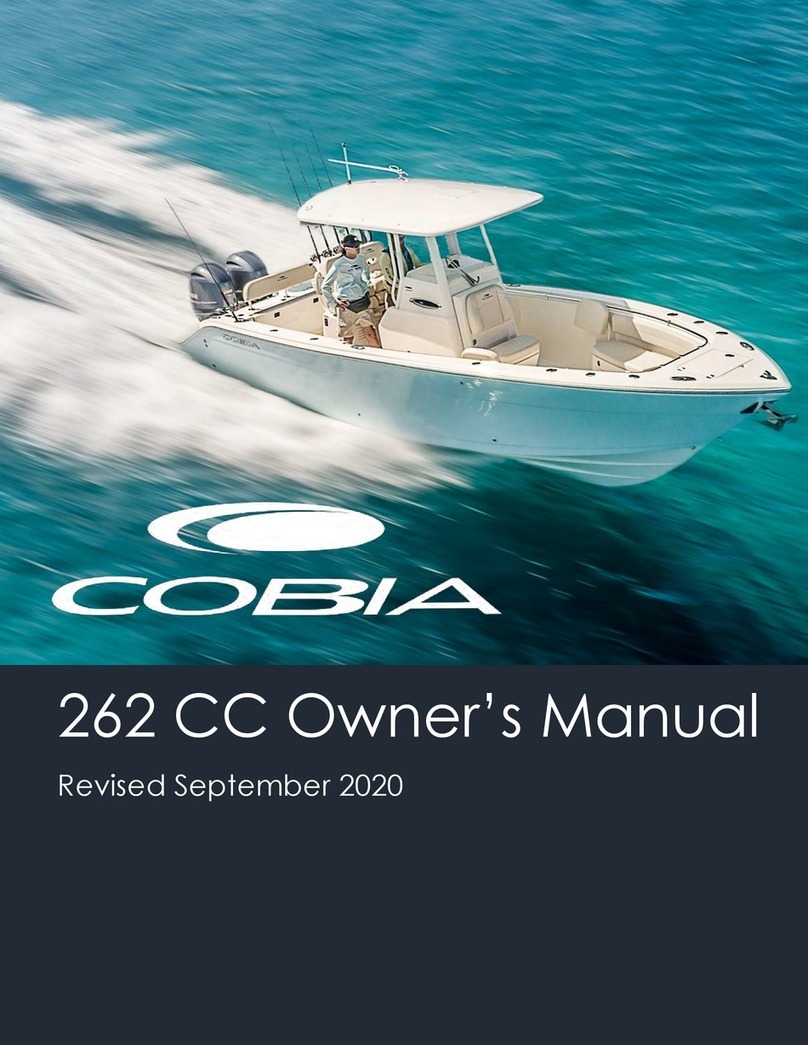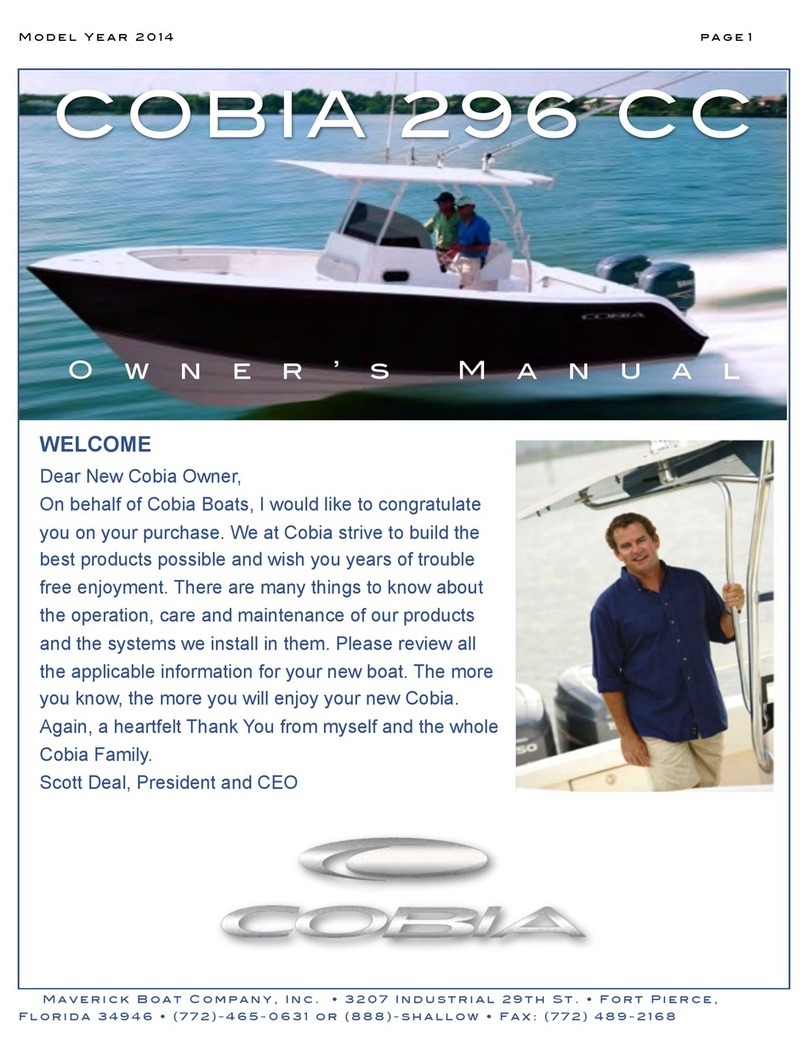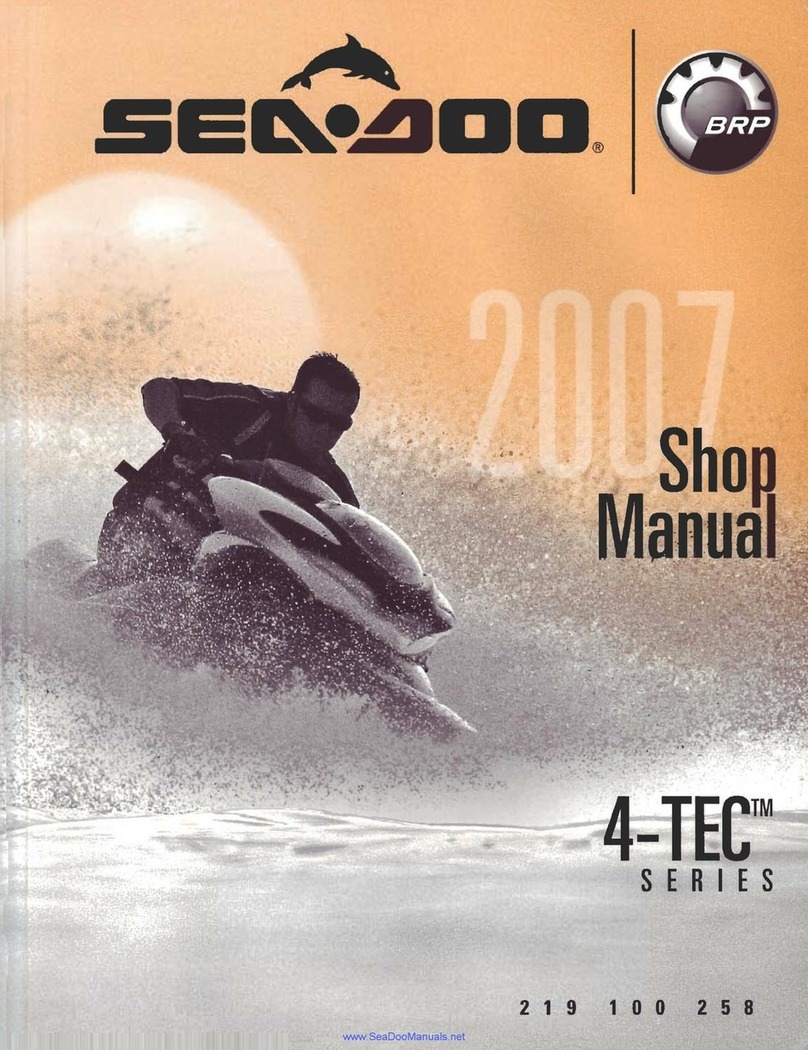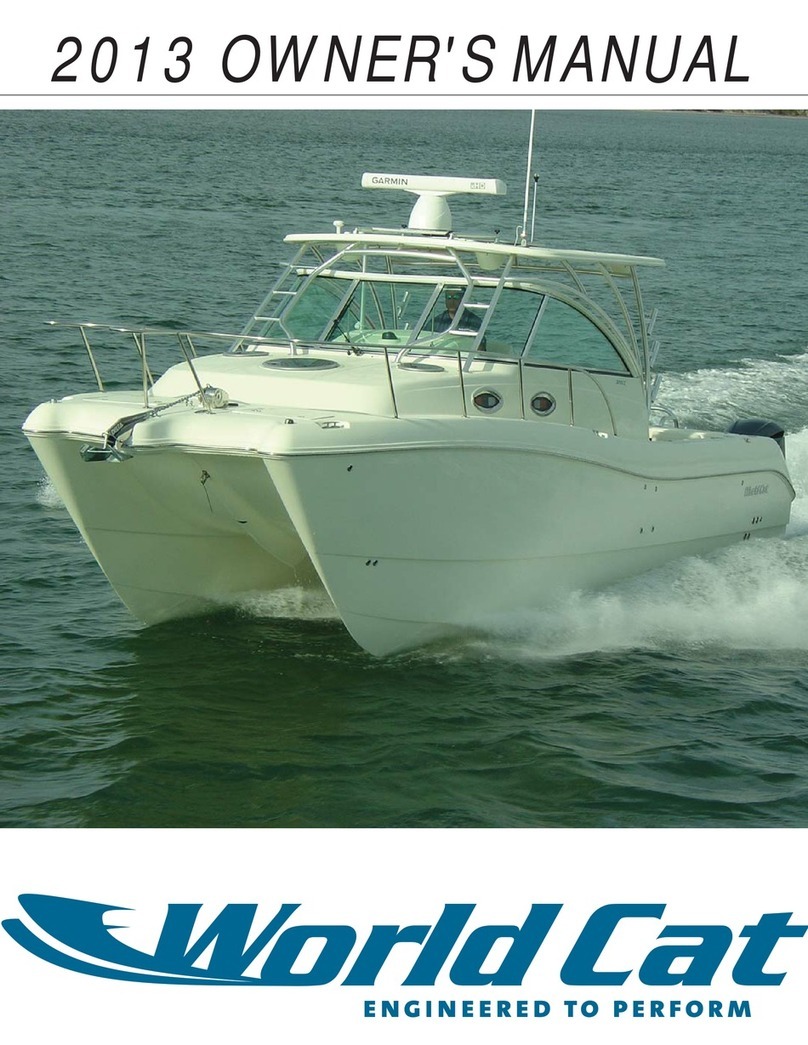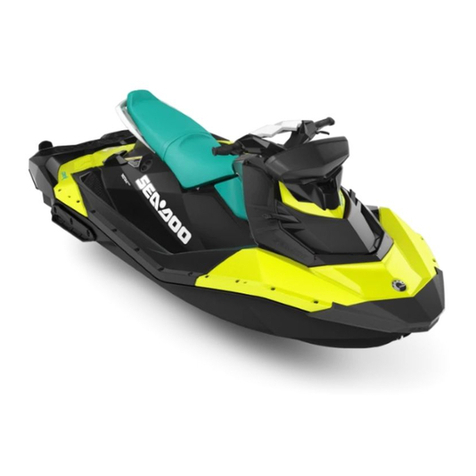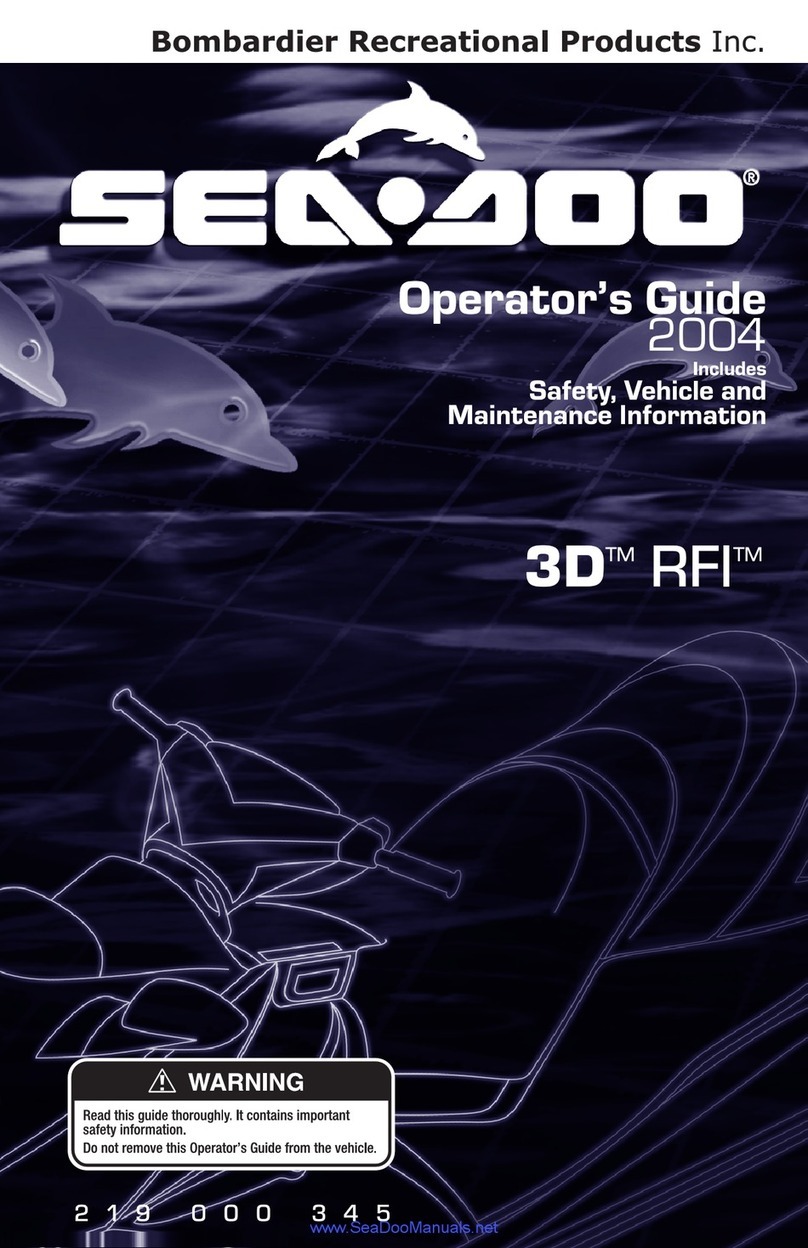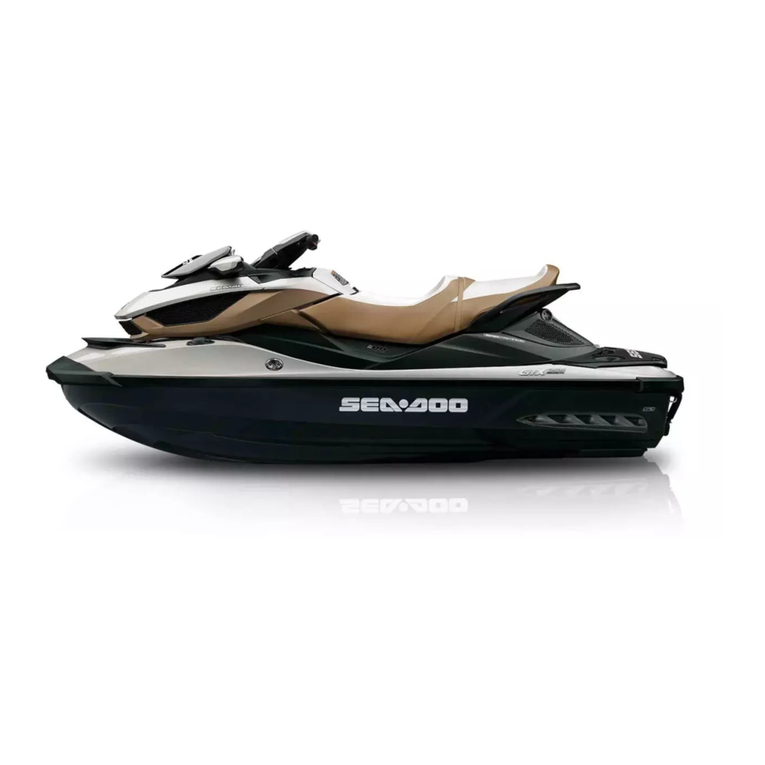
Model Year 2019 page 2
Maverick Boat group, Inc. • 3207 Industrial 29th St. • Fort Pierce, Florida 34946 • (772)-465-0631 or (888)-shallow • Fax: (772) 489-2168
TABLE OF CONTENTS
Specifications……………………………………..………………….2
Pre-Operation Checklist…………………………………………….3
Yamaha Engine Break-In Periods................................................4
Engine Stop Switch......................................................................4
Switch Panels...............................................................................5
Instrument Panel with Yamaha Multi-Function Gauges…….……5
301 Boat Layout………………………………………………….…..6
Cobia Duffel Bag..........................................................................7
Fuel/Water Separators.................................................................8
Garboard Drain Plug....................................................................8
Bilge Access.................................................................................9
Bilge System…………………………………………………..….…10
Ball Valves, Thru Hull Fittings & Scuppers………….……………11
Cockpit Courtesy Lights & Bow Rail……..……………………….12
Head Systems…………………………………………………..13-15
Stainless Boarding Ladder.........................................................16
Props..........................................................................................16
Fuel System...............................................................................17
Steering......................................................................................18
Self Bailing Cockpit....................................................................19
Livewell System.........................................................................20
Fish Lockers...............................................................................20
Anchor Locker / Rode Storage…………………………………….21
Table Lift…….……………………………………………………….21
Trim Tabs………………….……………………………………..….22
Macerators………………………………………………………..…23
Console Access & Saltwater Washdown…………………….…..24
Freshwater System................................................................25
Battery Switch & Distribution Panel.……………………….26-27
Battery Charger………………………………………………….28
12 Volt Accessory Plug…………………………………………28
Leaning Post & Battery Access..………………………………29
Aft Seating……………………………………………………..…30
Optional Bow Cushion Set.....................................................30
Cockpit Bolsters.....................................................................31
Pop-up Bow Light & Cleats……………………………………..31
T-Top Options........................................................................32
Kite/Rod Holders....................................................................33
Optional Stereo System.........................................................34
Optional Windlass System………………………………….34-35
Wiring System Diagrams……………………………………36-38
Warranty………………………………………………………… 39
L.O.A............................................................29’ 07”
BEAM...........................................................10’ 00”
DRAFT...............................................................21”
WEIGHT W/O ENGINE..........................5915 LBS.
FUEL CAPACITY.....................................230 GAL.
DEADRISE @ TRANSOM......................21.5 DEG
MAXIMUM H.P............................................600 HP
TRANSOM HEIGHT…….......................25”TWINS




















